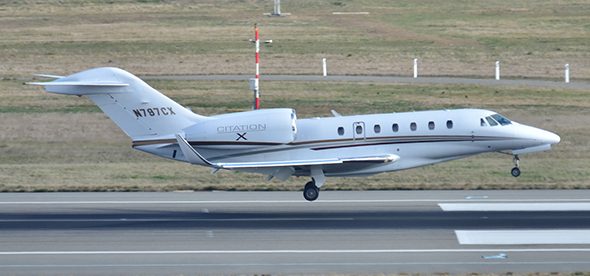When Flying First Class Isn’t Good Enough

General Electric is a multinational conglomerate which operates in many different categories, manufacturing stuff ranging from light bulbs to railroad equipment while also providing cybersecurity services, financial capital, and healthcare technology solutions. They’re basically in the business of being in business, selling off and buying divisions like a consumer would buy shoes — if it looks interesting, GE may try it on for size.
For its century-plus history, this posture has typically suited the company well — $100 billion in revenue, in a slow year, is nothing to balk at. But as the world has become less friendly to conglomerates, GE has seen itself fall down the chart of the world’s largest companies. Its market cap — also just north of $100 billion — is about half that of Walmart’s, a third of Visa’s, and a far cry from the $500 billion minimums you’ll get from newer technology companies like Facebook, Microsoft, Google, Amazon, and Apple. When now-former CEO Jeff Immelt took the reins in 2001, as Forbes reported, shares of GE were selling at about $40, but when he announced his retirement in the summer of 2017, they were down to $29. And that was before the stock went up 4% on the news that he was stepping down.
When he gave up the reins that August, something else ended — one of his curious — and at the time, unreported — habits. GE had a fleet of corporate jets available for executive travel, but Immelt didn’t take one to big meetings.
He took two.
The Wall Street Journal summarized the situation:
For much of Jeff Immelt’s 16-year run atop one of the world’s largest conglomerates, an empty business jet followed his GE-owned plane on some trips to destinations around the world, according to people familiar with the matter. The two jets sometimes parked far apart so they wouldn’t attract attention, and flight crews were told to not openly discuss the empty plane, the people said.
This struck many on Wall Street as reckless. It should go without saying that one doesn’t need a second plane to get him or her from point A to point B. Individual planes can transport multiple people; individual people do not require multiple planes. And yet, GE regularly felt otherwise — despite the fact that the company was in a bit of a cash crunch.
The story, now one worth investigating further, got even more attention from the Journal (and many others). In a follow-up report from the venerable financial paper, the Journal noted that in one case, a “chase plane” took off from Boston just minutes after Immelt’s main plane did, en route to Anchorage, Alaska, where it sat for five days. Immelt’s plane also went to Alaska but then continued on to China and South Korea. When the real plane returned to Alaska, both planes departed for Boston together (well, separated by a few minutes, at least). The justification offered by GE? The second plane was there in case the first one had mechanical issues.
Now, maybe — maybe — it makes sense for the CEO of a very big company to have some backup transportation. Investors, though, weren’t convinced and expected a deeper explanation. Immelt claimed to be ignorant of the second plane’s existence until he was informed of the practice in 2014 (at which time he mostly ended the practice, per CNBC). In a letter to a GE director, Immelt wrote (via the New York Times): “Given my responsibilities as C.E.O. of a 300,000-employee global company, I just did not have time to personally direct the day-to-day operations of the corporate air team. I had every right to expect that it was professionally run. Other than to say ‘Hello,’ I never spoke to the leader of corporate air in 16 years.”
Whether you take him at his word or not is up to you, but either way, it’s not something that will happen again — at least not for GE. John Flannery, a longtime GE exec who replaced Immelt in August of 2017 as CEO, also became Chairman that October. And a few weeks after becoming Chairman, Flannery instituted a cost-savings measure, grounding all the corporate jets and instead instituting a policy where executives were to either charter planes as needed or fly commercial.
Bonus fact: The Dow Jones Industrial Average (DJIA) is the go-to metric to assess the overall performance of the major American stock exchanges. (Its accuracy is hotly debated but we’ll not go into that here.) The DJIA looks at 30 different companies to come up with its “average” and as companies slow and grow, the list of ones which the comprise the DJIA changes. The DJIA got its start in 1896 with a dozen companies in the calculation, and as of June 28, 2018, none of those twelve are still included in the mix. The last survivor? General Electric, which was replaced on that day by the parent company of pharmacies Walgreens and Boots.
From the Archives: Why It Takes So Long to Board an Airplane (And How to Fix It). Maybe.
